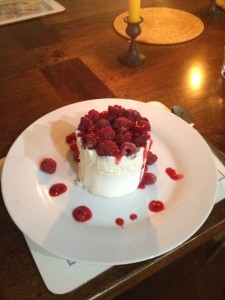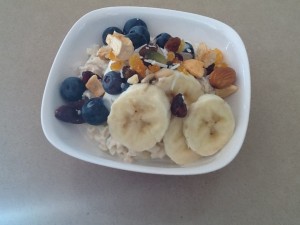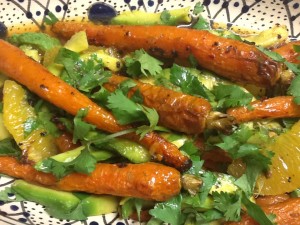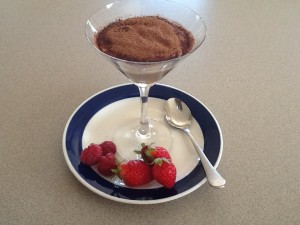Matthew and I met in Geneva in the 70s when I was working for the British Mission to the UN and he was working for the Aussies. We were each there for 3 years and did lots of skiing and eating, but we didn’t meet until he was just about to leave. Somehow we worked things out and here we are decades later!
In Switzerland baked ham is served in many restaurants, invariably accompanied by gratin de pommes de terre dauphinois – or spuds dauphin style in English! Indeed, there’s one place we used to frequent in Geneva which serves nothing else. Ham and potatoes baked with cream, cheese and garlic go so well together – it’s a marriage made in heaven.
A chest freezer in the garage allows me to take advantage of special offers and freeze excess produce from the garden, such as tomatoes and cumquats. Early in the New Year our local supermarket was selling off legs of smoked ham with a good discount, so I bought one and stuck it in the freezer.
We had friends coming to Woodlands for lunch and as we’ve all had time to get over the festive season I decided it was time to get the ham out of the freezer. There are lots of different recipes for glazes and below are three of my favourites. Basically anything sweet and sticky will do. The gratin recipe is one I picked up on a card in a supermarket while living in Geneva, so it’s very authentic. Gruyère is the traditional cheese for this dish. Other hard cheeses such as Emmenthal or Cheddar will work but the flavour will be different. Forgot to take a photo, so you’ll just have to use your imagination!
Glazes for Ham
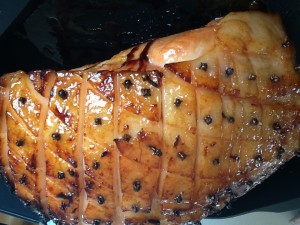
Brandied Apricot Glaze:
1 cup apricot jam
2 tsp soy sauce
2 Tbs vinegar
1 tsp hot English mustard
¼ cup brandy
Citrus Liqueur Glaze:
1 cup concentrated orange juice (or other juice)
¼ cup honey
¼ cup brown sugar
2 tsp soy sauce
2 tsp Dijon mustard
2 Tbs Cointreau or Grand Marnier
Pineapple-Orange Glaze:
¼ cup pineapple juice
2 tsp soy sauce
2 Tbs orange marmalade
1 Tbs honey
¼ cup brown sugar
1 Tbs brandy
Heat all ingredients for glaze in a saucepan, stirring until dissolved. If chunky, push through a sieve, then cool.
To Glaze the Ham:
Remove rind from ham by running your thumb around edge just under skin, loosening and pulling as you go. When you have pulled it to within 15 cm of the shank end, take a sharp pointed knife and cut through rind around shank end in a zigzag pattern, then pull off the rest of the skin up to this edge.
Make parallel cuts through fat at 2-3 cm intervals, just through the surface, not deeply, first one way and then the other to achieve a diamond effect. If liked stick cloves into each diamond space.
Place ham in a large baking dish. Brush with chosen glaze and bake at 180°C for about 45 minutes, brushing with more glaze every 10 minutes or so. It’s ready when it’s an even amber colour all over. Serve hot or cold.
Store the ham on a large plate or chopping board in the fridge. Place the plate inside a cotton ham bag or substitute an old pillowcase. Every time you use the ham rinse the bag in cold water and wring it out tightly. This will help to keep the ham fresh and moist for up to 4 weeks.
Gratin de Pommes de Terre Dauphinois
1 kg potatoes
200ml milk
100ml cream
50g butter
50g grated Gruyere cheese
2 cloves garlic, crushed
salt, pepper and nutmeg to taste
Preheat oven to 180°C. Peel potatoes and slice thinly. Place in overlapping rows in a greased shallow, oven-proof dish, seasoning as you go with salt, pepper and half the garlic. Mix milk, cream, the rest of the garlic and nutmeg and pour over. Cover with foil and bake for 50 minutes or until potatoes are tender – test with a knife. Turn oven up to 220°C and remove foil. Sprinkle with the grated cheese, dot with butter, cut into small pieces and bake for 20 mins or until golden brown.
Serves 6-8
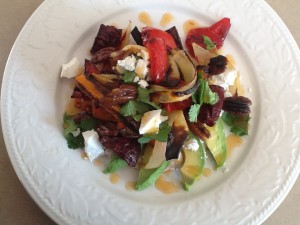 Hummus – homemade or bought
Hummus – homemade or bought
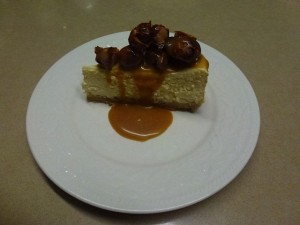
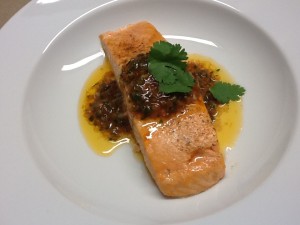
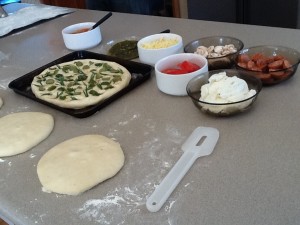
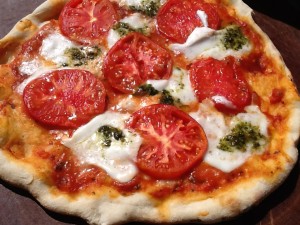

 pizzas
pizzas